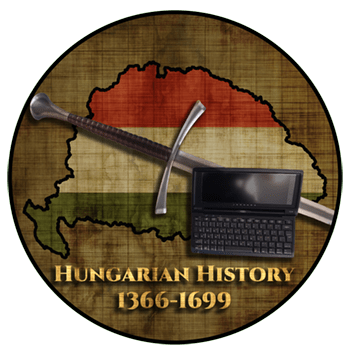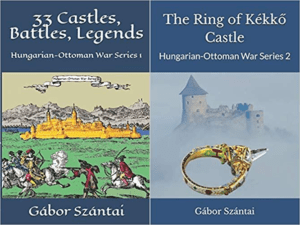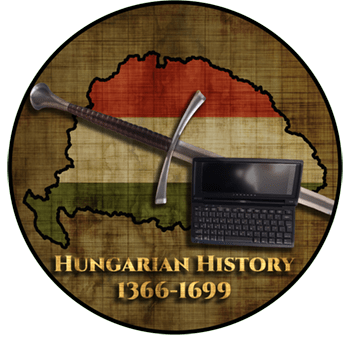For centuries, the virtues of the Hungarian Hussars have been loyalty, comradeship, helpfulness, responsibility, and self-sacrifice. All these values were particularly evident in the 1848-49 War of Independence and were manifested in the purest way in the behavior of the Székely Hussars, and especially in the actions of their commander, Hussar Colonel Kiss Sándor. It is not in vain that those who remember the heroic battles gave the brave colonel the honorable title of “Leonidas of the Tömös Pass”.

Though educated in an Imperial military school and imbued with the highest sense of service to the Emperor, the aspiring officer and his hussars knew well the duty of a Hungarian soldier when forced to choose between his country and the Emperor.

The Székely Hussar Regiment, being a border guard unit, was not fully deployed. However, when the Serbian uprising (instigated by the Habsburgs) in the south and the invading marauding troops from the Turkish Empire broke in and burned and plundered the Hungarian and German settlements in Bácska, the Székely Border Guard Hussars were called in by Prime Minister Count Batthyány Lajos. For three months they protected the population of Futak and then Feketehegy.

By the end of September, however, trouble was brewing in Transylvania, and a few weeks later, the Imperial forces turned against the revolution and the Romanian uprising (instigated by the Habsburgs) and cut off the Székely Land from the motherland. Although the Hussars’ hearts were drawn home by their concern for their families and their own homeland, they continued to serve the common cause in their native Hungary for weeks afterward.

At this time, their commander was Major Kiss Sándor, who had led the Székely Hussars from battle to battle in the legendary Father Bem’s Transylvanian Campaign since December. Kiss Sándor proved to be one of General Bem’s most trusted lieutenants, both in battle and in organization and training. Upon his return to Székelyland, he supervised the complete mobilization, recruitment, and training of the Hussar Regiment. He became a responsible teacher for his recruits and a role model for his veterans. As a colonel, he was given one of the most dangerous commands, that of the Brassó Division.

175 years ago, on June 19-20, 1849, the Hungarians were outnumbered by the Russians who tried to break through the Carpathian Mountains to put down the Hungarian War of Independence, at the request of the Habsburg monarch. The Russian troops, a fearsome, overwhelming force, faced the small, mostly newly recruited division as an obstacle that could only be overcome at great cost in blood. The Hungarians defended the Tömös Pass for two days.

The 85th and 86th battalions (from Háromszék and Udvarhelyszék) were under the command of Lieutenant Colonel Szabó Nándor. According to Orbán Balázs, 4 companies of the 85th Battalion were stationed here under the command of Major Mara Gábor, while the 7th Border Guard Battalion, formed in Udvarhelyszék, was under the command of Major Jánosi József Jánosi. The defense also included the Borbáth hussar squadron under the command of Borbáth László and the artillery of 7 or 8 cannons under the command of artillery captain Semsey Tamás.

The enemy was led by the Russian infantry general Alexander Nikolayevich Lüders. The defenders repulsed the attackers twice on the 19th, with the four Gábor Áron cannons of the artillery standing out. The defenders withdrew to the second line of defense, where the Cossacks were already attacking. On the Russian side, the commander of the 1st Don Regiment was killed and Major General Dyck was seriously wounded.

The defenders held out bravely for six hours, but Lüders kept sending in more and more reserves. Szabó Nándor ordered a retreat to the third line of defense at Alsótömös. Here, at dawn on June 20, Kiss Sándor arrived with the Székely hussar battalion led by Daczó Zsigmond and took over the command from Szabó Nándor. He tried to repulse the enemy with a counterattack on Predeal, but without success. A fierce battle developed.

The enemy finally broke through the pass, crushed the heroically defending Brassó Division, and soon captured the town. Colonel Kiss Sándor, the division commander was the hero of the battle. The Hungarian garrison of the Brassó fortress (Kronstadt, Brasov) surrendered after a brief resistance. The rest of the division, led by Lieutenant-Colonel Szabó Nándor and Major Daczó Zsigmond, retreated to Erdővidék and then to Oklánd via Nagyajta.
A Hungarian officer named Székely Gergely remembered the battle as follows:
“When the Muscovites were lined up in battle formation, Lieutenant-Colonel Szabó Nándor bade Colonel Kiss farewell, saying that it was his turn to take over. Szabó was at the head of his battalion, and the four of us set off for Brassó. A few hundred paces from the lower fortifications, the young captain Bethlen Zsigmond galloped after us and told us that the Muscovites had begun their advance.
At the same time, the first cannon was fired. At that moment, Colonel Kiss turned around and nervously told us to keep going, that he would catch up with us. When we arrived at Brassó, the white horse of our Colonel Kiss Sándor passed us with bloodstains on his side, from which we learned that we had lost him”.

But what happened to Colonel Kiss? In addition to being a role model, the commander had to sacrifice himself. Kiss Sándor knew this very well. Treachery led to the appearance of Russian troops at the back of the defense when the Colonel was wounded.
That is why the Hussar officer, who was wounded when he fell from his horse, did something that had never been seen before in the last defensive position. Unable to get back on his horse, he had his soldiers raise him above their heads on the top of the rampart, so that all his soldiers could see that the leader was still alive, and led the defense with a drawn sword – until the final Russian onslaught swept everything away.

According to legend, Colonel Kiss Sándor, weakened by the loss of blood, tied himself to a chair to prevent himself from falling, and placed himself on the top of the battlements to lead the battle, while his loyal soldiers covered him with their bodies from the shots. It was a scene fit for a painter’s canvas, and a battle scene was later painted as a poignant apotheosis of responsibility for his soldiers and self-sacrifice for his country.
The remaining troops, led by Szabó Nándor, cut through the Russian ring and marched through Hétfalu to Háromszék. According to Szabó Nándor, the Hungarian casualties were 300, the wounded 200, and 150 prisoners, including the wounded Colonel Kiss Sándor. Russian casualties were estimated at 700, including 6 senior officers.
The Russians brought Kiss Sándor to Chernovic as a valued prisoner of war after he was captured as a seriously wounded man. Before being turned over to the Imperial authorities, the proud Hussar officer chose to end his life by his own hand, to avoid the humiliation he would likely suffer. His memory, however, lived long among the Székelys as the “Leonidas of the Tömös Pass”.

Sources: https://funzine.hu/hu/egy-igaz-huszar-tortenete-kiss-sandor/ and http://HM Hadtörténeti Intézet és Múzeum
Dear Readers, I can only make this content available through small donations or by selling my books or T-shirts:
Please, support me with a coffee here: https://www.buymeacoffee.com/duhoxoxa

You can check out my books on Amazon or Draft2Digital, they are available in hardcover, paperback, or ebook:
https://www.amazon.com/dp/198020490X or at https://books2read.com/b/boYd81

My work can also be followed and supported on Patreon: Become a Patron!http://Become a Patron!
Become a Patron! and donations can be sent by PayPal, too: https://shorturl.at/qrQR5


https://hungarianottomanwars.myspreadshop.com/all
Subscribe to my newsletter here: https://shorturl.a


